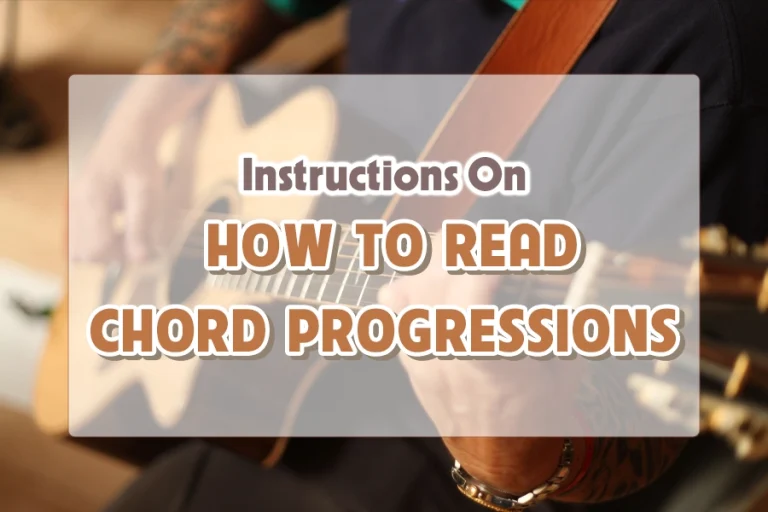
Understanding the difference between a preamp and an amp is essential for any electric guitarist looking to perfect their sound. Here, we’ll show what each component does and how they can enhance your music. Whether you’re practicing at home, recording in the studio, or performing live, knowing how to optimize your setup with the right preamp or amp is key.
What is a Preamp ?
When you pluck a string on your guitar, the signal it produces is relatively weak. This is where the preamp comes in—it amplifies this signal to a level where it can be further processed and heard through an amplifier. But a preamp does more than just boost volume; it sculpts the sound.
A preamp can add warmth to your sound, making it richer and more inviting, or it can add brightness, giving it a sharper, more defined edge. For example, a tube preamp might add a warm, vintage color to your sound, reminiscent of classic rock records from the ’60s and ’70s.
This can make your guitar sound smooth and polished or gritty and raw. This texture affects how your playing feels, both to you and the listener. For instance, adjusting the gain on your preamp can introduce a gritty texture, perfect for blues or rock, adding an emotional depth and rawness to your playing that resonates with the listener’s feelings.
Not all preamps are built into amplifiers or recording interfaces. Many pedals and multi-effects processors include built-in preamp sections, allowing you to shape your tone right at your feet. This is especially useful for players who rely on pedalboards for their sound.

In a recording environment, the preamp is crucial for capturing the true essence of your guitar’s sound. A high-quality preamp can make a significant difference in the clarity, warmth, and overall quality of your recordings, providing a solid foundation for further mixing and mastering.
The best way to understand the impact of a preamp on your sound is to experiment with different settings and types. Don’t be afraid to tweak the knobs and switches to explore various tonal possibilities. Each adjustment can bring out new aspects of your playing and inspire new musical ideas.
The preamp is a powerful tool in shaping the sound of your electric guitar, adding color and texture to your music. By understanding and experimenting with your preamp, you can unlock new dimensions in your sound, making your guitar playing more expressive and unique. Whether you’re recording in a studio, playing live on stage, or just jamming at home, the preamp is your first step towards creating a sound that truly represents you.
What Is An Amp ?
When we’re discussing electric guitars, an amp is essentially your best friend. It’s the device that takes the low-level signal from your guitar’s pickups and boosts it into a louder signal. This louder signal is what lets your guitar sing through the speakers, allowing you to share your music with the world, whether you’re jamming at home, recording in a studio, or rocking out on stage.

An amp serves two main functions: amplification and tone shaping. The amplification part is straightforward – it makes your guitar audible. But the tone shaping? That’s where your personal touch comes in. Through adjustments on the amp, you can influence your guitar’s sound in myriad ways, from crystal-clear tones to gritty, overdriven sounds that define genres like rock and blues.
What’s The Difference Between Preamp vs Amp ?
So, what’s the big difference between an amp and a pre-amp? The simplest way to put it is this: the pre-amp shapes your tone and gets it ready for the spotlight, while the amp (specifically, the power amp section) brings it to life, loud and clear.
When discussing the difference between a preamp and an amp in the context of electric guitars, it’s helpful to think about it like preparing for a concert. The preamp and the amp (amplifier) both help deliver the sound of your guitar, but they do so in distinct ways.

- Preamp: The preamp is like the sound engineer for your guitar. It takes the initial, low-level signal from your guitar and processes it, shaping the tone. This includes adjusting the bass, midrange, and treble frequencies to craft the sound you want. If you’re using effects like distortion or overdrive, the preamp is where these effects are typically applied. The goal of the preamp is to prepare and enhance your guitar’s sound before it reaches the main stage—the amplifier.
- Amp (Power Amp): Once your guitar’s signal is shaped and ready, it heads to the power amp. The power amp is the main stage of the concert, where your guitar’s performance is amplified loud enough for the audience to hear. It takes the processed signal from the preamp and boosts it without changing the tone that the preamp has set. The power amp’s job is simple: make the sound big enough to fill the room.
While the preamp sets up and tweaks your guitar’s tone, the power amp makes sure that this sound is heard loud and clear. Both parts are crucial for delivering a great performance, but they handle different aspects of your sound. This way, whether you’re practicing at home or rocking out on stage, your electric guitar can sound just the way you want it to.
Which Do I Need To Choose: Amp, Preamp For Electric Guitar ?
Choosing between a standalone preamp, an amp, or incorporating both into your electric guitar setup depends largely on your specific needs and what you already have in your rig.
Why Choose a Standalone Preamp?
- Tone Shaping: If you are not satisfied with the tone-shaping capabilities of your existing amplifier, a standalone preamp can provide additional control and options to sculpt your sound more precisely.
- Recording: Standalone preamps are fantastic for recording environments. They allow you to achieve the desired sound directly into your recording equipment without the need to crank up an amp, which is ideal for keeping volume levels manageable in studio settings.
- Flexibility: Using a standalone preamp with a separate power amp can give you more flexibility to mix and match components and tailor your setup to different situations, be it live performances or studio work.
Why Opt for an Integrated Amp?
- Convenience: An integrated amp, which includes both a preamp and a power amp in one unit, is generally easier to manage and set up. This is a solid choice for those who prefer simplicity and straightforwardness in their gear.
- Cost-Effectiveness: Buying an integrated amp can often be more cost-effective than purchasing separate preamp and power amp units.
- Space-Saving: For those with limited space, an integrated amp takes up less room than separate components.

Every amp has a preamp section and a power amp section. The preamp shapes your tone, and the power amp makes it loud. However, when we talk about choosing between a preamp and an amp, we’re often looking at standalone preamps and how they can be used either with a power amp or integrated into a full amplifier setup.
Standalone preamps offer more flexibility in tone shaping and can be a great addition to a rig that already has a power amp but lacks the tonal character you’re seeking. They’re also invaluable in recording scenarios, where you might want a certain sound without cranking up a full amp.
Why Combine Both?
- Versatility: You might choose to use a standalone preamp with an integrated amp if you’re seeking additional tonal options or want to add a unique character to your sound that the integrated amp’s preamp section doesn’t offer.
- Enhanced Control: Adding a standalone preamp to your setup allows for more detailed tone shaping, which can be particularly useful for professional musicians who need precise control over their sound
Decision Making
- Consider Your Needs: Assess whether your current setup is meeting your needs. If you find your amp’s preamp section lacking, consider a standalone preamp.
- Evaluate Your Budget: Standalone preamps can be an investment. Ensure it fits your budget or consider saving up for a more comprehensive solution if necessary.
- Think About Your Space: If you’re limited in space, an integrated amp might be the way to go, but if you perform professionally and have room for more gear, expanding your setup with separate components might enhance your sound.

How To Use/Choose Amp, Preamp For Electric Guitar ?
Choosing the right amp or preamp for your electric guitar involves understanding how each component affects your sound. This guide will help you decide and use these essential tools to shape your music effectively:
- Identify Your Needs
Practice and Small Gigs: A combo amp is likely all you need. It’s portable, straightforward, and packs both a preamp and power amp in one.
Recording and Tonal Flexibility: Consider a standalone preamp. It offers more control over your sound and can be a boon in the studio.
Large Venues and Custom Rigs: You might want a separate preamp and power amp for the ultimate control over your sound and volume.
- Know Your Sound
Experiment with different amps and preamps. Each has its own character, from tube warmth to solid-state clarity. Your music style and personal taste will guide you here.
- Budget Wisely
Gear can get expensive. Decide on a budget that allows you to explore your sound without breaking the bank. Sometimes, a simple setup with a good preamp pedal and a reliable amp can work wonders.

- Try Before You Buy
Whenever possible, test gear in person. What sounds good on paper (or screen) may not resonate with you in real life. Trust your ears and go with what feels right.
- Don’t Forget About Compatibility
Make sure your preamp and amp (if you’re going for separate units) work well together. Impedance and signal levels should match to avoid any unwanted noise or technical issues.
Bottom line
Knowing the difference between preamps and amps is crucial for any electric guitarist looking to shape their sound precisely. While preamps offer detailed tone control and flexibility, especially in quieter or studio settings, amps bring your music to life with power and volume. Choosing the right setup depends on your specific sound needs and playing environment.








